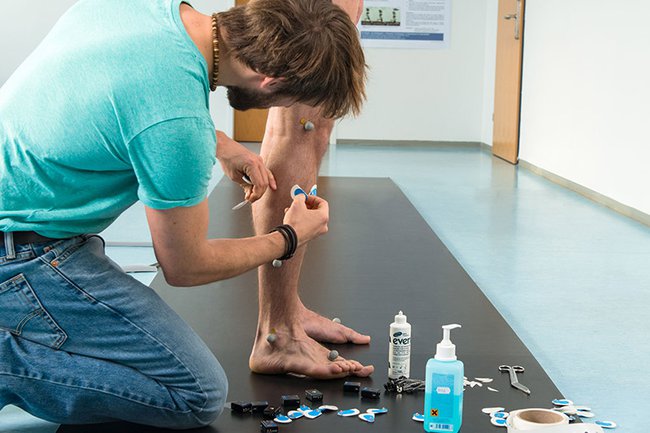Back to Health with Computer Science
At the Center for Digital Health Innovation, the St. Pölten UAS researches information and communication technology to benefit the healthcare system.
Rehabilitation, movement analysis, visual analytics, machine learning and Augmented and Virtual reality (AR/VR): in the Center for Digital Health Innovation (CDHI), experts from health professions and technology research digital innovations for the healthcare system. “We combine our diverse skills and use them in an interdisciplinary manner,” says Brian Horsak, Senior Researcher at the Institute of Health Sciences at the St. Pölten University of Applied Sciences.
The “ReMoCap-Lab” (Laboratory for Capturing Motion and Augmenting Environment in Motor Rehabilitation) plays a pioneering role in the area of gait and movement analysis. In several research projects, researchers examined intelligent gait pattern analyses for the detection of gait disorders and developed a learning software for gait analysis for physiotherapists as well as an intelligent shoe sole that makes gait disorders audible.
Reaching the Therapy Goal with “Exergames”
Based on questions and problems arising from gait and movement rehabilitation, the St. Pölten University of Applied Sciences searches for solutions using machine learning, AR/VR and visual analytics. The findings from the movement and gait analyses are used for developments in the therapeutic area. An example is the implementation of rehabilitation programmes using so-called “exergames”: “playful virtual reality applications are programmed on the basis of the obtained data. The patient's movements are evaluated at the same time by a movement analysis system in order to provide feedback and corrections when carrying out the exercise programmes,” explains Horsak.
The Black Box Problem of AI
Since the General Data Protection Regulation (GDPR) came into force, decisions made by an algorithm have to be traceable in their individual steps. This poses problems especially for the area of artificial intelligence since methods that have a “black box character” predominate in this field: humans cannot verify why an algorithm comes to a certain decision.
This lack of “explainability” is a major challenge for researchers and developers. “Algorithms from artificial intelligence use structures similar to those found in our brains, such as neural networks. We are currently increasingly applying this knowledge of explainability in gait and movement analysis, thereby taking on a pioneering role in the research community,” emphasises Horsak.

